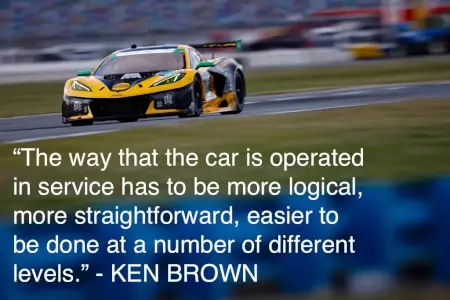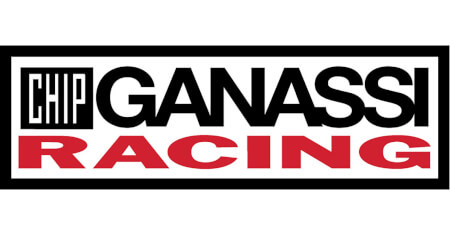January 25th 2024
A new phase begins for Corvette in IMSA
The Chevrolet Corvette Z06 GT3.R that makes its competition debut this weekend is the third phase of IMSA WeatherTech SportsCar Championship race car since the introduction of the mid-engine C8 platform. Beginning with the C8.R GTLM, that car was altered into something more similar to the GT3 machinery that populates GTD PRO and GTD when GTLM was discontinued.
The changes to the C8.R car to make it suitable for racing in GTD PRO include the addition of ABS, a ballast box, and an air restrictor for the engine. The trick differential had to be changed to simply being a limited slip. All in all, the car was a compromise, and Corvette Racing and its drivers in GTD PRO initially found it hard to work with.
The Z06 GT3.R, on the other hand, is a ground-up, brand-new car. Developed by Pratt Miller, it’s a different concept than GTE/GTLM. Instead of being run exclusively by a factory team, it’s built for customers to run in GT3-based series worldwide, such as GT World Challenge and the World Endurance Championship’s LMGT3 class. As such, it must work well on a variety of tires from different manufacturers. Whereas in the WeatherTech Championship the cars run exclusively on Michelins, other series dictate Pirelli or Goodyear. The GTE car was designed to run on a very specific Michelin developed for the Corvette.
To the naked eye, there may not be much of a difference at first glance. But all the considerations that come into effect when designing a customer car, such as being suitable for a wide range of drivers as well ease of serviceability and repair. Fortunately, the new car doesn’t feel that much different than the GTE car.
“From a driver perspective, I feel like they’re almost the same,” explains Nicky Catsburg, who in 2023 was part of the WEC GTE-Am-winning trio for Corvette and this season will be partnering with Tommy Milner in the No. 4 Corvette Racing by Pratt Miller Motorsports Z06 GT3.R. “It feels so similar. There are some small changes, obviously. ABS is a big change to what we experienced going into the corners; it has a rather big effect on how that feels. But other than that, I must say the car feels feels fairly similar. I think most of the changes are for the team itself — they had to build so many new things. Completely different aero spec of course, engine has changed. So it was more of a change for them than it really was for the drivers. To me, it feels like driving the same car.”
Pratt Miller’s Ken Brown, the firm’s technical director for motorsports, says that with GTE/GTLM, there were a lot of tradeoffs in terms of the complexity and serviceability of the car in order to extract the ultimate performance. Building a GT3 car, though, comes with its own set of compromises and complexities.
“The way that the car is operated in service has to be more logical, more straightforward, easier to be done at a number of different levels,” Brown says. “And you’re not only going to have factory drivers in the car, you’re going to have gentlemen drivers who may only come in for one race or only be doing a couple races a year. They have a significant financial responsibility to the car as well. It has to be enjoyable, so we had to think about how easy is it to drive? What are the ergonomics? How does it handle different tires? How does it work across different track temperatures and just the way that the driver can extract lap time has to be easier, or at least something that doesn’t require as much time behind the wheel.”
But in designing a customer race car, they didn’t want to lose the general concept that made it a successful racing machine to begin with. So things like suspension, pickup points, engine and driveline architecture as well as general bodywork concepts were retained. But a GT3 car is heavier than a GTE car, so that allowed the engineering team to put weight back in in an intelligent manner. That means some parts could be built more robustly to keep the car reliable and able to survive the inevitable on-track contact.
One of the biggest changes is the support structure that has to be put in place to sell customer cars. Chevrolet tabbed Pratt Miller to provide that as well, so when a customer team like AWA in GTD or DXDT in GT World Challenge America needs technical support or parts, they can get them right away.
The four Corvette Z06 GT3.Rs that will take the green for the 62nd Rolex 24 At Daytona may be all-new cars built to a different concept than Pratt Miller used before, but the goal of winning races hasn’t changed. There will just be a lot more opportunities for victories as the car spreads worldwide.
For more information: www.racer.com
For more information: www.racer.com














